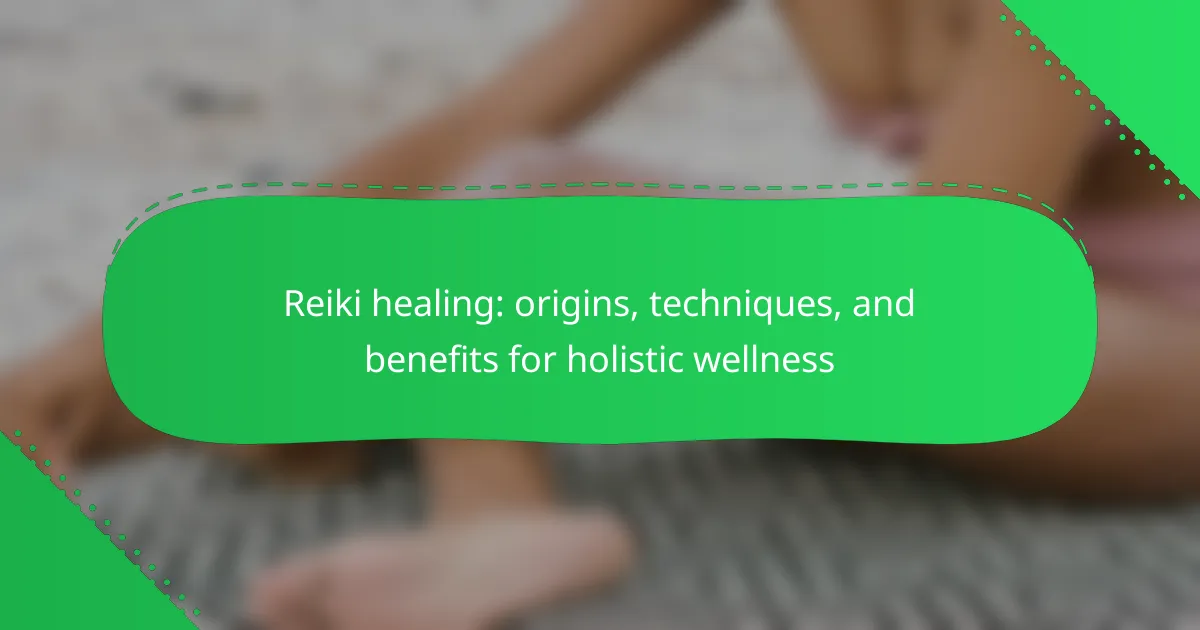Reiki healing offers significant benefits for holistic wellness, including stress reduction and emotional balance. Originating in Japan, it combines ancient practices with techniques for channeling universal energy. This article explores Reiki’s origins, various healing techniques, and its impact on overall well-being. Additionally, it addresses cultural variations and common misconceptions surrounding this healing practice.
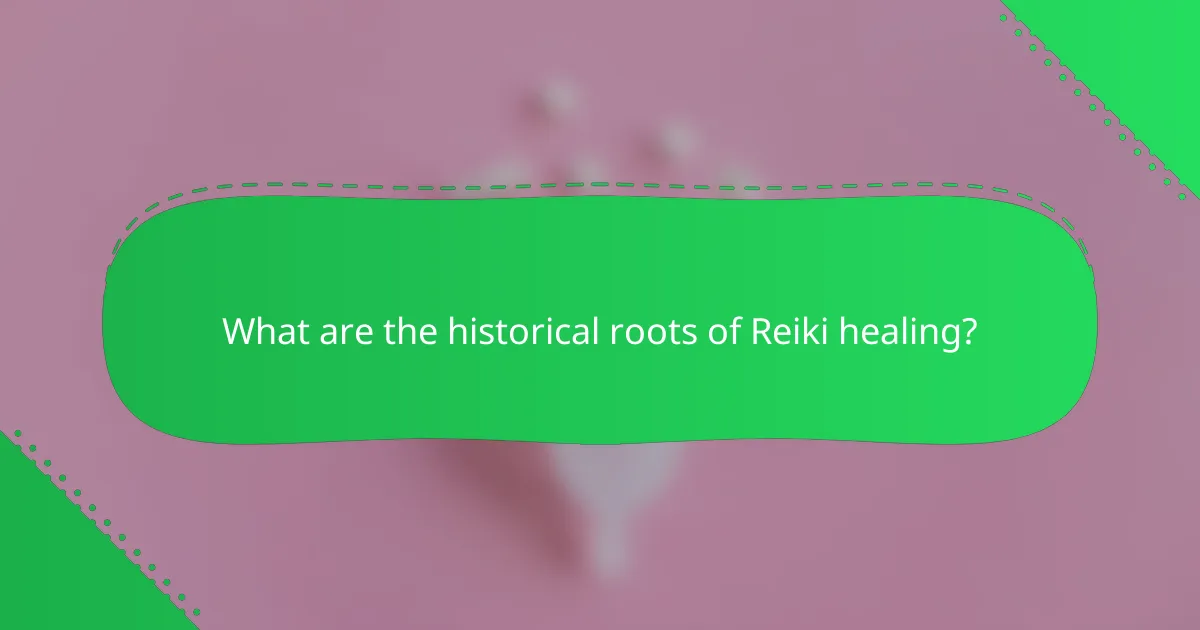
What are the historical roots of Reiki healing?
Reiki healing originated in Japan in the early 20th century, founded by Mikao Usui. It combines ancient Buddhist practices with elements of Shinto and traditional Japanese medicine. Usui developed techniques to channel universal energy for healing, emphasizing spiritual growth and holistic wellness. Over time, Reiki has evolved, incorporating various styles and practices, but its core principles remain rooted in promoting balance and harmony within the body. Today, Reiki is recognized globally for its benefits in stress reduction, relaxation, and emotional healing.
How did Reiki evolve from its origins?
Reiki evolved from its origins in Japan in the early 20th century, influenced by traditional healing practices and spirituality. Initially developed by Mikao Usui, Reiki emphasizes energy transfer for holistic wellness. Over time, various techniques emerged, including Usui Reiki, Karuna Reiki, and others, each offering unique approaches to healing. The growing global interest has led to adaptations, making Reiki accessible across cultures while maintaining its core principles of balance and harmony.
Which cultural influences shaped Reiki practices?
Reiki practices were shaped by various cultural influences, primarily from Japanese and Tibetan traditions. The integration of Shinto beliefs, Buddhism, and ancient Chinese medicine contributed to its holistic approach. Japanese Reiki, developed by Mikao Usui, emphasizes spiritual healing and energy transfer. Tibetan influences introduced techniques like visualization and mantra usage, enhancing Reiki’s depth. Additionally, Western adaptations have incorporated psychological and therapeutic elements, broadening its appeal and accessibility.
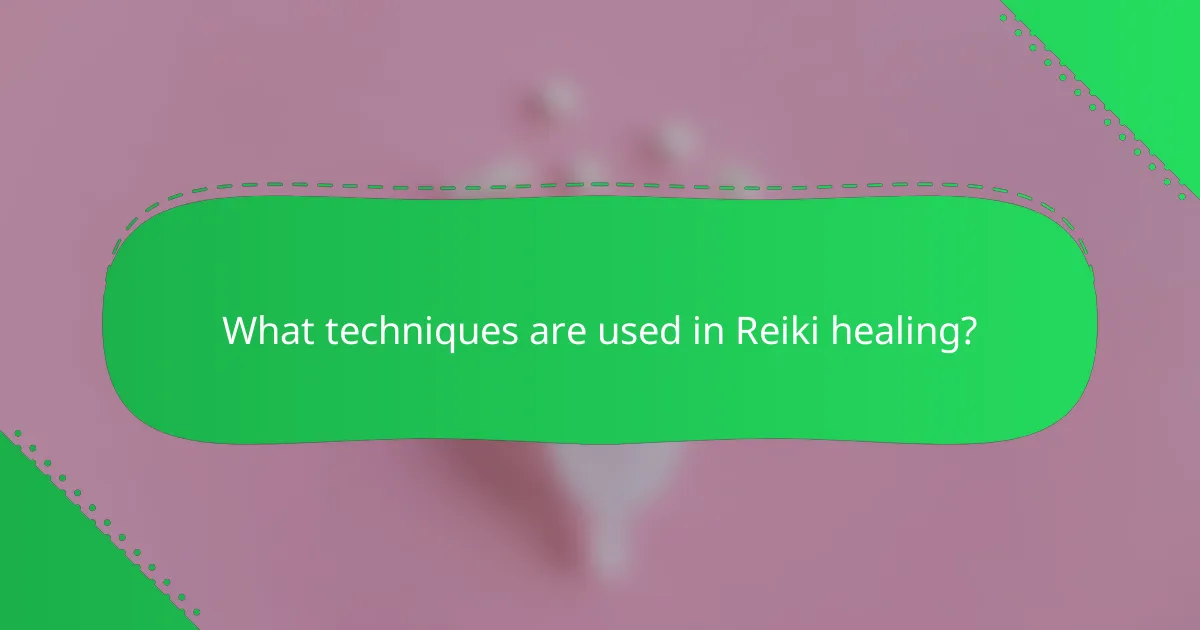
What techniques are used in Reiki healing?
Reiki healing employs techniques such as hand placements, visualization, and intention setting to channel energy. Practitioners use specific hand positions on or near the body to facilitate healing. Visualization techniques help enhance the flow of energy, while intention setting focuses the practitioner’s energy on the recipient’s needs. These methods aim to promote relaxation, reduce stress, and foster overall well-being.
How does the hand placement technique work?
The hand placement technique in Reiki healing involves practitioners lightly placing their hands on or near the recipient’s body to channel energy. This method promotes relaxation and balances energy flow, aiding in physical and emotional healing. Practitioners may use specific hand positions to target different areas, enhancing the overall effectiveness of the session. The technique’s roots in Japanese healing traditions emphasize the connection between mind, body, and spirit, contributing to holistic wellness.
What are the different styles of Reiki practiced globally?
Various styles of Reiki practiced globally include Usui Reiki, Karuna Reiki, and Shamanic Reiki. Usui Reiki, originating from Japan, emphasizes energy channeling through hand placements. Karuna Reiki focuses on compassionate healing and utilizes symbols for deeper connection. Shamanic Reiki integrates traditional shamanic practices with Reiki techniques, promoting holistic wellness. Each style offers unique attributes and benefits tailored to individual healing needs.
Which tools and symbols enhance Reiki sessions?
Various tools and symbols enhance Reiki sessions, including crystals, essential oils, and specific hand positions. Crystals amplify energy flow, while essential oils promote relaxation. Symbols like the Cho Ku Rei and Sei He Ki facilitate healing intentions. Each tool contributes uniquely to the overall experience, deepening the healing process.
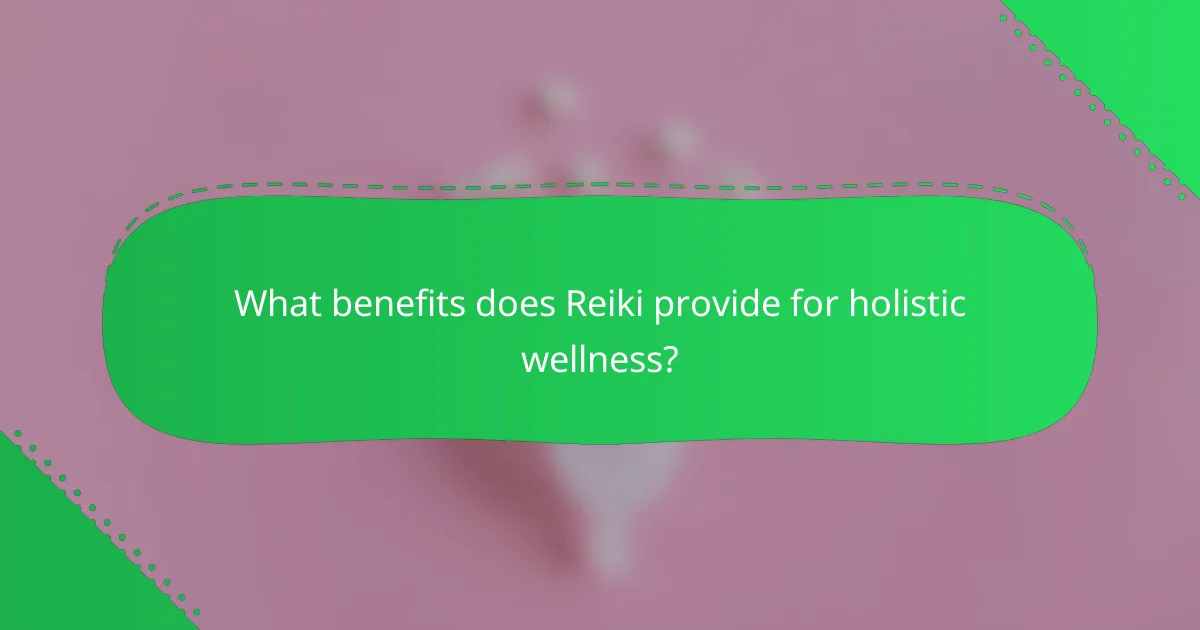
What benefits does Reiki provide for holistic wellness?
Reiki provides numerous benefits for holistic wellness, including stress reduction, emotional balance, and enhanced energy flow. It promotes relaxation and supports the body’s natural healing processes. Additionally, Reiki can alleviate pain and improve sleep quality. Practitioners often report a greater sense of peace and well-being. These effects contribute significantly to overall holistic health.
How can Reiki support mental health and emotional well-being?
Reiki can significantly enhance mental health and emotional well-being by promoting relaxation and reducing stress. This holistic healing practice originated in Japan and employs gentle touch to channel energy. Research indicates that Reiki may lower anxiety levels, improve mood, and foster a sense of peace. As a result, individuals often experience better emotional regulation and resilience. Furthermore, Reiki’s unique attribute lies in its non-invasive nature, making it accessible for various mental health challenges.
What role does Reiki play in physical healing and pain management?
Reiki plays a significant role in physical healing and pain management by promoting relaxation and reducing stress. This energy healing technique facilitates the body’s natural healing processes, often resulting in decreased pain perception and improved overall well-being. Reiki practitioners use specific hand positions and gentle touch to channel energy, which can alleviate discomfort and enhance recovery. Studies indicate that patients receiving Reiki report lower levels of pain and anxiety, contributing to their holistic wellness journey.
Which specific health conditions can benefit from Reiki?
Reiki can benefit various health conditions, including stress, anxiety, chronic pain, and insomnia. This holistic practice promotes relaxation and emotional balance, aiding recovery from physical ailments. Research indicates that Reiki may enhance overall well-being, making it a valuable complementary therapy.
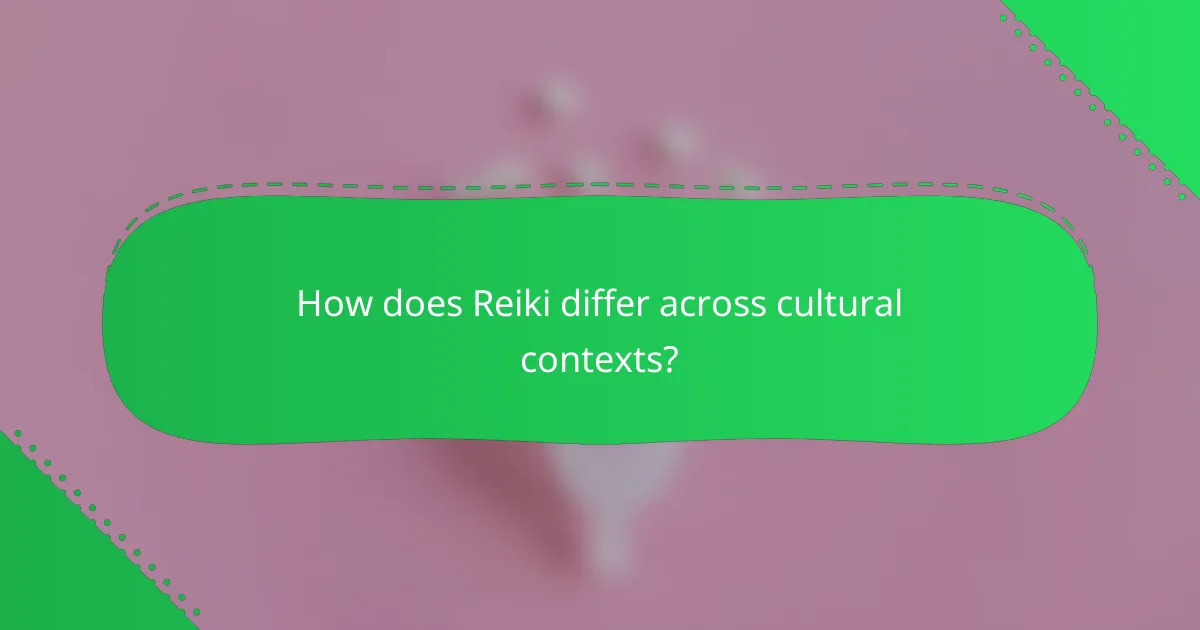
How does Reiki differ across cultural contexts?
Reiki varies significantly across cultural contexts due to differing beliefs and practices. In Japan, Reiki emphasizes spiritual growth and self-healing, focusing on the practitioner’s inner energy. Western adaptations often prioritize physical healing and stress relief, integrating various techniques. Cultural beliefs shape how Reiki is perceived and applied, influencing its techniques and benefits. For instance, in some cultures, Reiki is combined with local healing traditions, enhancing its holistic wellness approach. Understanding these differences enriches the practice and appreciation of Reiki globally.
What are the unique practices of Reiki in Japan?
Reiki in Japan emphasizes unique practices that focus on spiritual and energetic healing. Traditional methods include hands-on healing, distant healing, and the use of symbols for energy channeling. Practitioners often engage in meditation and breathing techniques to enhance their connection to universal energy. Additionally, the practice places a strong emphasis on the practitioner’s intention and the importance of a calm, centered state during sessions. These elements contribute to Reiki’s holistic benefits, promoting physical, emotional, and spiritual wellness.
How is Reiki perceived in Western wellness communities?
Reiki is increasingly embraced in Western wellness communities as a complementary healing modality. Practitioners and participants report enhanced relaxation, stress reduction, and emotional balance. The holistic approach aligns with the growing focus on integrative health practices. Reiki’s non-invasive techniques appeal to those seeking alternative therapies. Additionally, many wellness centers incorporate Reiki into their offerings, highlighting its perceived benefits in promoting overall well-being.
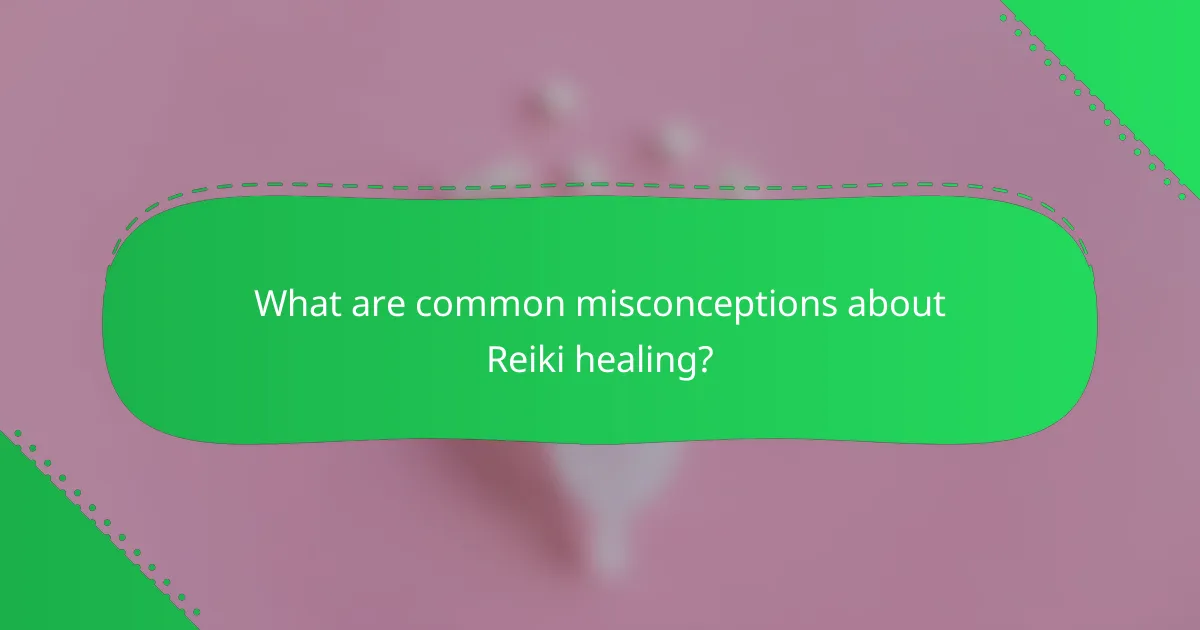
What are common misconceptions about Reiki healing?
Many misconceptions surround Reiki healing, often leading to misunderstandings about its practice and benefits. Common myths include the belief that Reiki is a form of massage, that it is a religion, or that it requires special powers. In reality, Reiki is a holistic healing technique that promotes relaxation and stress reduction. It does not involve physical manipulation like massage therapy. Reiki practitioners channel energy to facilitate healing, which is rooted in the concept of universal life energy. This technique can enhance overall wellness and support emotional balance. Misconceptions may also arise from skepticism about energy healing, but numerous studies indicate its positive effects on well-being.
Why do some people doubt the effectiveness of Reiki?
Some people doubt the effectiveness of Reiki due to a lack of scientific evidence supporting its claims. Critics often cite the absence of rigorous clinical trials and objective measurements. Additionally, skepticism arises from misunderstandings about energy healing and its non-physical nature. Believers argue that personal experiences and anecdotal evidence demonstrate its benefits, highlighting a divide between subjective and objective validation.
How can one differentiate between legitimate Reiki practitioners and frauds?
To differentiate between legitimate Reiki practitioners and frauds, look for verified credentials, client testimonials, and ethical practices. Authentic practitioners often have formal training and certification from recognized Reiki organizations. They prioritize client well-being, offer clear communication, and maintain professional boundaries. In contrast, frauds may lack proper training, make unrealistic claims, or pressure clients for repeated sessions. Always trust your intuition and seek practitioners who provide a safe, supportive environment for healing.
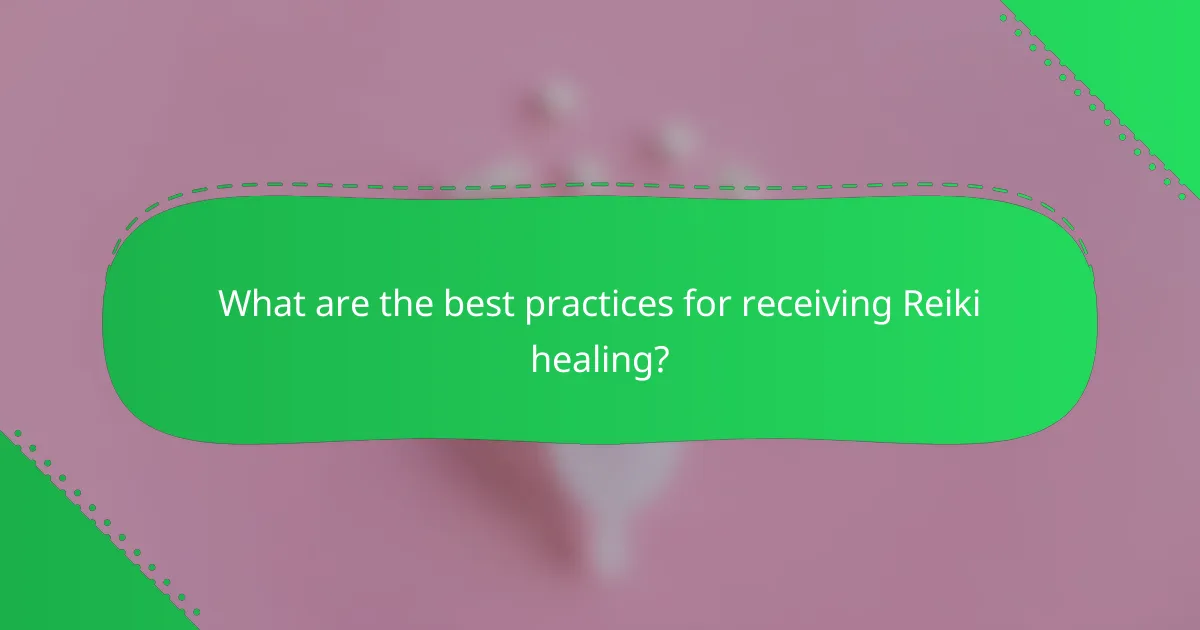
What are the best practices for receiving Reiki healing?
To receive Reiki healing effectively, create a calm environment, set clear intentions, and remain open to the experience. Focus on relaxation and let go of expectations.
1. Prepare your space: Ensure it is quiet and free from distractions.
2. Set intentions: Clearly define what you hope to achieve from the session.
3. Relax: Engage in deep breathing or meditation before beginning.
4. Stay open: Allow the energy to flow without resistance or judgment.
5. Follow-up: Reflect on your experience and any sensations felt during the session.
How to prepare for a Reiki session?
To prepare for a Reiki session, ensure a calm environment, wear comfortable clothing, and maintain an open mind. Hydrate well before the session to enhance energy flow and consider setting an intention for your healing. Arrive a few minutes early to relax and connect with the practitioner.
What should clients expect during and after a session?
Clients can expect relaxation and emotional release during and after a Reiki session. The experience often results in reduced stress, enhanced well-being, and a sense of balance.
During the session, clients typically lie down fully clothed while the practitioner lightly places hands on or above specific areas. This non-invasive technique aims to channel healing energy, promoting relaxation and emotional clarity.
After the session, clients may feel a deep sense of peace, clarity, or fatigue as the body integrates the energy shift. It’s common to experience emotional release or insights, enhancing overall wellness.
To maximize benefits, clients should stay hydrated and reflect on their experience, allowing time for the healing effects to manifest.
Which tips enhance the Reiki experience?
To enhance the Reiki experience, practitioners can adopt several effective tips. Creating a calm environment promotes relaxation. Setting clear intentions focuses energy flow. Practicing mindfulness enhances awareness of sensations. Staying hydrated supports energy balance. Regular practice deepens connection to Reiki energy. Incorporating crystals can amplify healing effects.
